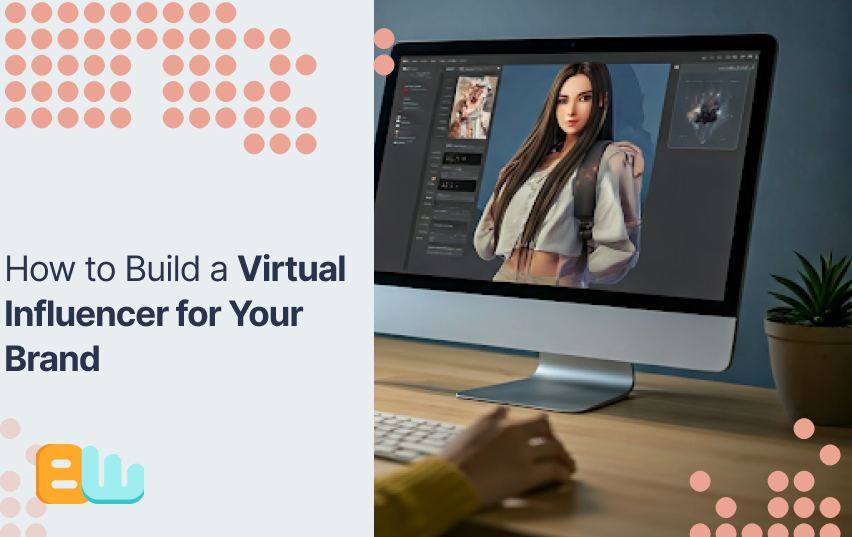
In the changing world of influencer marketing, virtual influencers have become interesting digital figures. They change how brands interact with their audiences. These computer-made characters mix reality and the digital world. This creates a new way for brands to form partnerships and connect with people. So, what is a virtual influencer, and how can brands use their great potential?
Understanding the Virtual Influencer Phenomenon
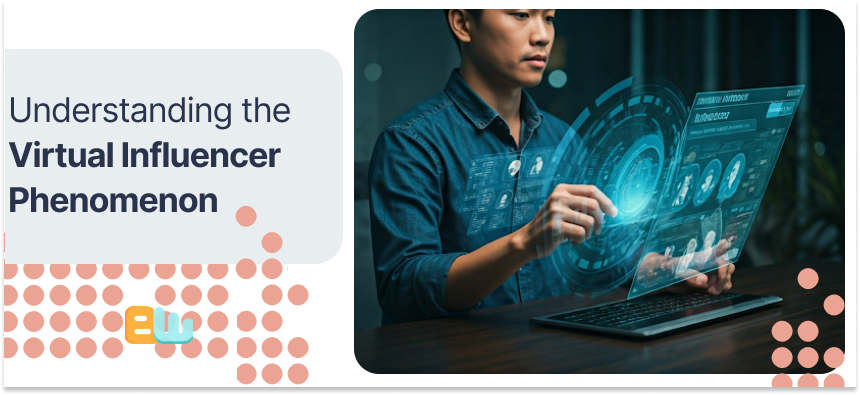
Virtual influencers, also called AI influencers, mark a new phase in digital marketing. Unlike human influencers, these digital avatars are carefully created using advanced tools like artificial intelligence, computer graphics, and motion capture. Lil Miquela is a CGI influencer with millions of followers. She shows how engaging and attractive virtual personalities can be. This new type of marketing allows brands to work with digital characters with carefully designed personalities, looks, and values that match their target audience.
The Rise of Virtual Influencers in Digital Marketing
The rise of virtual influencers shows a significant change in how brands use social media and make content. These influencers are not limited by the physical world. They give brands more control over what they say and how they appear. This control comes from virtual influencers using advanced systems and machine learning. They can be designed to match specific brand values and goals.
These digital avatars can connect with people worldwide at any time. They provide 24/7 content creation and communication, creating new chances for brands to share stories that appeal to their audience. As technology improves, we will see even more realistic virtual influencers, making distinguishing between the digital and real worlds harder. Brands that adapt to this change will be better positioned to attract audiences, build loyalty, and succeed in the changing field of social media marketing.
Key Differences Between Virtual and Human Influencers
Virtual and human influencers play essential roles. The physical world does not limit these influencers. Traditional influencers are valued for being honest and relatable. They connect with audiences by sharing their personal stories and opinions. This authentic connection builds trust and credibility, impacting how people buy and which brands they like.
In contrast, virtual influencers are made-up digital characters. They provide brands with total control and a perfect image. These influencers have created personalities, styles, and values that keep their brand message consistent and reduce risks linked to unpredictable real influencers.
The Basics of Creating a Virtual Influencer
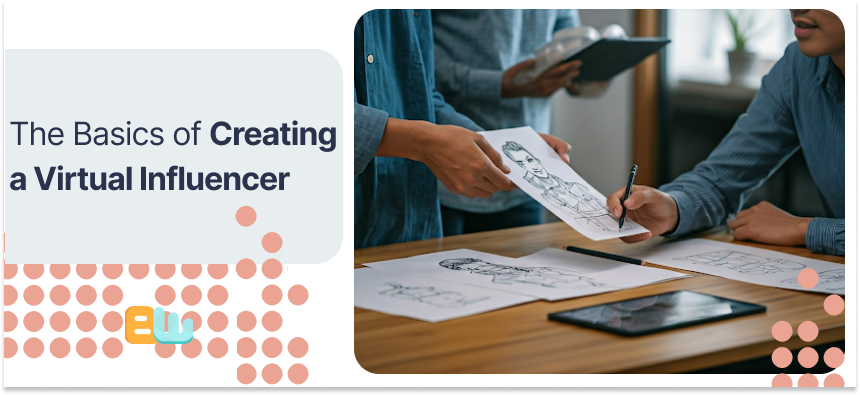
Creating a successful virtual influencer requires building a digital persona that matches your brand values and connects with your target audience. These digital avatars, formed by artificial intelligence, should have an evident personality, style, and voice that relate to your brand’s identity and goals.
It’s essential to keep things real, even in the online world. Though your virtual influencer does not have human experiences, their shared stories and interactions should feel honest and relatable. This helps to create genuine connections with your target audience.
Defining Your Virtual Influencer’s Persona
Before starting with the technical parts, you must clearly define your virtual influencer’s personality. This step is very important because it builds the base for their online identity. Think about your target audience: their age, interests, and dreams. What kind of personality traits and values would appeal to them? What voice and way of speaking seem real and connecting?
After understanding your target audience, list the main personality traits of your virtual influencer. Are they funny and sarcastic? Kind and caring? Brave and adventurous? These traits will guide how they interact with others, the content they create, and their overall image. Ultimately, ensure your virtual influencer’s personality matches your main brand message and values.
Essential Tools and Technologies for Building Virtual Influencers
Creating a real and interesting virtual influencer needs a mix of the latest tools and technology. Artificial intelligence is very important here. It uses advanced methods like stable diffusion to make high-quality, custom images and videos. These AI tools help create eye-catching and lifelike digital characters, which are the base of your virtual influencer.
You can also use motion capture technology to give your digital character realistic movements and behaviors. You record how real people or objects move, then add those movements to your virtual influencer. This makes what they do look more natural and fun.
Beginner’s Guide to Building a Virtual Influencer
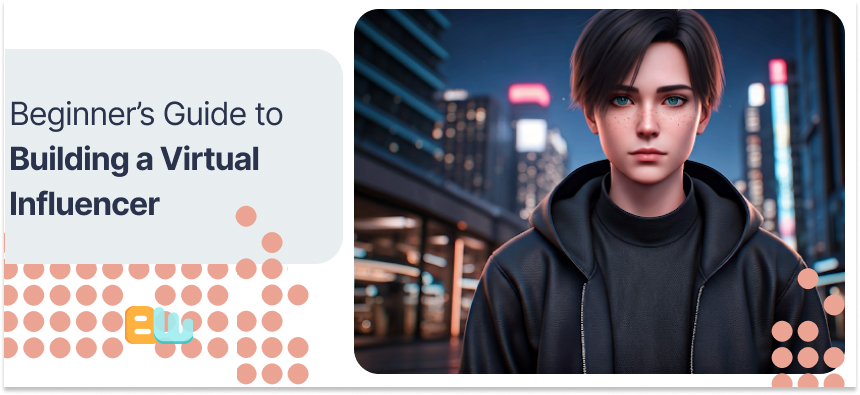
Creating a successful virtual influencer is more than just making great digital content. You need a smart plan that fits your marketing efforts and brand goals well. Start by figuring out who your target audience is and what main message you want to share.
Remember that your virtual influencer is part of your brand. It’s designed to boost brand awareness and engage with your audience. A clear strategy ensures that every piece of content contributes to your overall marketing goals.
Identifying Your Brand’s Needs and Audience
Before you create your virtual influencer, consider your brand’s needs. Consider your brand’s central values, messages, and looks. Knowing this will help your virtual influencer fit well with your brand identity.
Next, identify your target audience. Explore their age, interests, problems, and online actions. What kind of posts do they like? Which social media platforms do they use? Making your virtual influencer connect with your target audience is very important to get the best results. Consider possible brand partnerships to help your virtual influencer reach more people. Look for brands or individuals that share your values and audience.
What You’ll Need to Get Started
Starting your virtual influencer journey means getting the essential tools and building a strong base for content creation. First, choose an AI avatar generator or 3D modeling software to create your virtual influencer. Then, select a platform that fits your budget and the level of customization you want.
Next, gather the tools needed for content creation. You need good cameras, lighting, and editing software to make interesting photos and videos. If you want to add animation, look for and buy the proper animation software. Remember that careful planning is key to success. Create a content calendar to keep things consistent and ensure your virtual influencer’s content matches your overall marketing plan.
Step 1: Conceptualizing Your Virtual Influencer
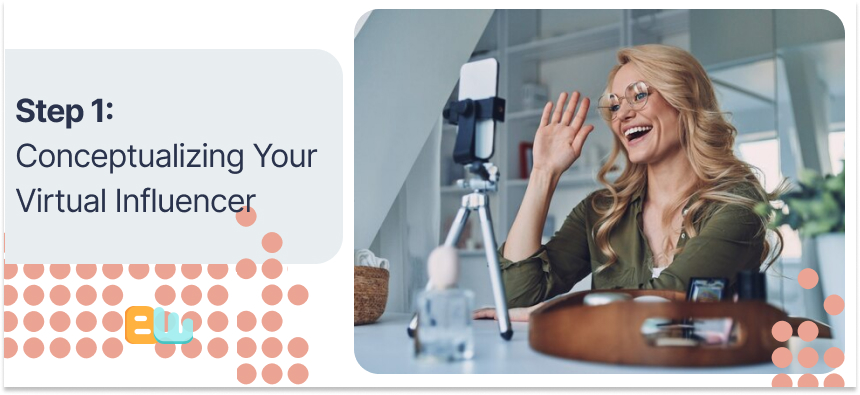
The first and most crucial step is to build your virtual influencer’s persona. This means thinking about more than how they look. You should also consider their background, values, and goals. Who are they? What do they believe in? What kind of content will they create? A strong digital persona is key to making them seem real and relatable.
Make sure your virtual influencer’s persona matches your brand values. If your brand cares about the environment, your virtual influencer could be someone who speaks up for eco-friendly choices. You create a clear and powerful brand story by including your brand’s essence in your influencer’s character.
Step 2: Designing the Visual Appearance
You can create their visual identity with a clear idea of your virtual influencer. This usually starts with using AI tools for image creation. Tools like DALL-E 2, Midjourney, and Stable Diffusion let you enter specific prompts, which help the AI produce unique and eye-catching images.
Consider age, ethnicity, body type, fashion style, and general appearance during the image creation stage. Your visual content should connect with your target audience and stay true to your brand. Try out different styles and looks until you find a visual that shows who your virtual influencer is.
Step 3: Develop a Unique Personality and Backstory
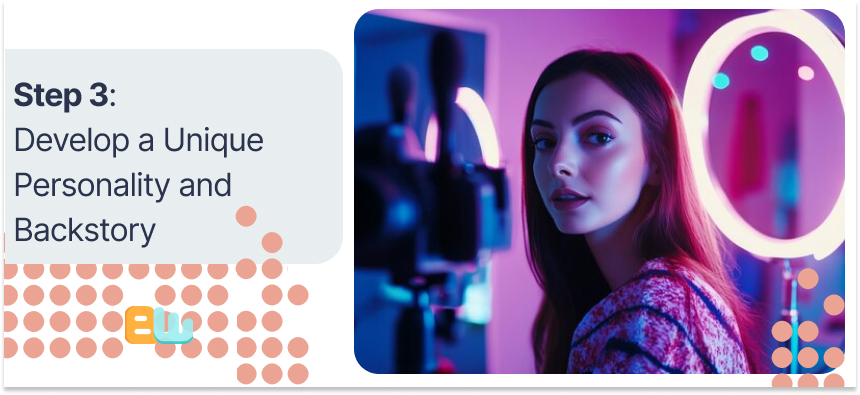
A strong virtual influencer looks good, but that’s only part of the work. To truly engage your audience and build real emotional connections, you must create a unique personality and backstory for your digital character. Add relatable quirks, passions, and dreams to make them unique.
Start by writing down specific personality traits that match your brand values and connect with your target audience. Are they funny, adventurous, caring, or a bit mischievous? These traits will influence how they interact with others, shaping their voice and style of communication.
Step 4: Bringing Your Virtual Influencer to Life with Animation and AI
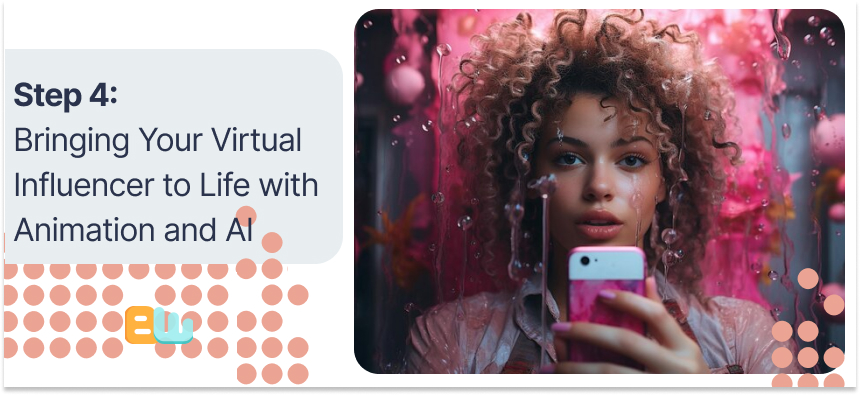
Now that your virtual influencer has a look and personality, it’s time to bring it to life with animation and artificial intelligence. Depending on how much you want to spend and how fancy you want it to be, you can check out different animation styles, ranging from simple motion graphics to more complex 3D animation.
With AI tools, you can automatically make some parts of your virtual influencer’s actions. For example, you can use chatbots to let your audience chat with them in real time. This way, they can answer comments and messages in a friendly and engaging way.
Step 5: Launching Your Virtual Influencer on Social Media Platforms
With your virtual influencer ready to go, launching them in the digital world is time. Choose the social media platforms where your target audience spends time. Is it Instagram, TikTok, YouTube, or a mix of these? A focused approach will help you reach more people and get them engaged.
Create a great profile that showcases your virtual influencer’s personality and offerings. Take time to write an interesting bio, choose a nice profile picture, and plan good posts or videos. First impressions are important, even online. Once your virtual influencer has a social media presence, start interacting with your audience.
Navigating Challenges in Virtual Influencer Marketing

While virtual influencer marketing offers new opportunities, it also presents unique problems. One big concern is ethical considerations. Some say these carefully created digital characters display unrealistic beauty standards, which could affect young people and their perceptions of themselves.
Brands must also consider brand safety risks. They must ensure their virtual influencers are not linked to harmful or controversial content. Dealing with the fast-changing technical hurdles of AI and animation requires skills and resources.
Addressing Ethical Considerations
When considering any marketing plan, you must consider ethical considerations in virtual influencer marketing. One big worry is the risk of pushing unrealistic beauty standards. Virtual influencers often have perfect looks and shapes, which can harm the body image of young and impressionable people.
To help with this, brands should focus on diversity and inclusiveness when creating virtual influencers. Aim to show a mix of ethnicities, body types, and abilities. It’s crucial to include body positivity messages and challenge unrealistic beauty standards in what your virtual influencer shares.
Overcoming Technical Hurdles
While artificial intelligence and related technologies grow, convincing virtual influencers is still hard. Realistic animation is complex and needs many tools. It often relies on advanced motion capture techniques and robust rendering systems.
Your virtual influencer also needs strong natural language skills to communicate effectively with people. Building AI that can immediately understand and answer complex questions is a tough job. To solve these problems, you need to invest in the right skills and tools. Working with skilled 3D modelers, animators, and AI developers is crucial.
Future Trends in Virtual Influencer Marketing

The potential of AI influencers goes further than just copying what human influencers do. As technology improves and people become more open to it, we expect more engaging and customized experiences with virtual influencers.
A big trend we can look forward to is the rise of interactive virtual worlds and the metaverse. These spaces will give brands fresh ways to tell stories and connect with consumers. These emerging platforms will create new chances to mix the digital world with the physical one.
The Evolution of AI in Shaping Virtual Personalities
The future of virtual influencers depends on how artificial intelligence (AI) improves. As AI technology advances, we can expect more complex digital personalities who can better connect with people. Imagine virtual influencers who understand human feelings, can joke around, and show humor.
Thanks to AI, which improves skills like natural language processing and sentiment analysis, virtual influencers can have honest, fun conversations with their fans. They can also offer personalized advice and even emotional support.
Emerging Platforms and Technologies for Virtual Influencers
The digital world changes constantly, and emerging technologies change how virtual influencers work. One significant change is the growth of the metaverse, a shared online space where users can meet each other and explore interactive digital worlds.
This new space offers exciting opportunities for brands to create appealing marketing campaigns with virtual influencers. In the metaverse, you could hold virtual meet-and-greets, product launches, or fun brand events, letting your influencer participate. This would also create new opportunities to combine the digital and physical worlds with new online experiences. New tools like augmented reality (AR) and virtual reality (VR) can also help connect the virtual and real worlds.
Conclusion
In conclusion, it is vital to understand virtual influencers if you want your brand to succeed in digital marketing. Start by defining your virtual influencer’s personality. Use the right tools and follow a clear step-by-step guide. This will help you create a virtual personality that connects with your audience. There may be challenges, like ethical issues and technical problems. However, keeping up with trends, such as AI and new platforms, will influence the future of virtual influencer marketing. Stay updated, creative, and strategic to make the most of virtual influencers and achieve success for your brand.
